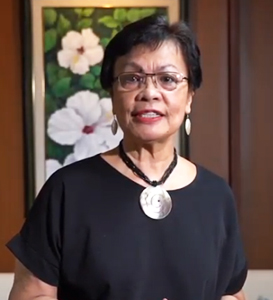
CENTROP Arboretum, a refuge for Philippine native trees
Message for the MOU signing between SU and EDC, 4 pm, 9 October 2020
Silliman University has always been committed to protecting and preserving the environment. Being situated auspiciously between the Cuernos de Negros mountains and the Bohol Sea, Silliman has been a leading academic institution in terrestrial and marine conservation.
It established the Center for Tropical Conservation Studies (CENTROP) through its Biology Department more than 30 years ago with the mission of being a catalyst for a better understanding of biodiversity conservation and sustainability, the enhancement and preservation of wildlife and the ecosystems they are associated with.
It fulfills this mission and Silliman’s conservation thrust through relevant research, environmental education and advocacy, development of environmentally-sound management interventions, and fostering linkages with institutions to promote conservation.
CENTROP is known globally for its captive breeding program for three threatened and endemic Philippine wildlife – the Philippine spotted deer, Visayan warty pig and Negros bleeding-heart.
But moreover, it has played a significant role in the monitoring and protection of key biodiversity areas in Negros and other critical habitats within the Visayas.
This partnership with the BINHI Program of the Energy Development Corporation helps widen CENTROP’s impact by promoting forest conservation and the preservation and propagation of threatened native tree species.
By establishing an arboretum at our Palinpinon facility, Silliman and EDC create a refuge for Philippine native trees that are critically endangered or at the brink of extinction due to deforestation.
Together, we affirm our unified goal to value not just the wildlife around us, but even more, the forests that nurture them and humans alike.
It is our fervent hope that this arboretum may serve not only as a tree refuge and source of viable seeds for reforestation but also as a venue for student and community learning to enhance and nurture conservation and environmental awareness.


